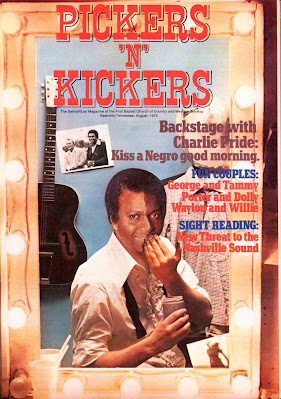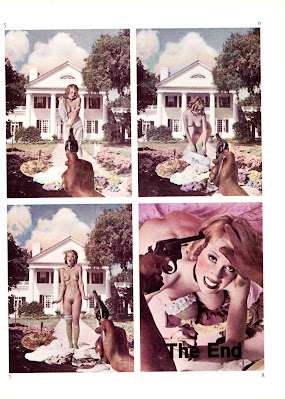National Lampoon
July, 1976
July, 1976, and listening to Top 40 FM radio is all about exposure to some classics of the decade. At number one, the Starland Vocal Band with 'Afternoon Delight,' and we've got the funk powerhouse 'I'll Be Good to You,' by the Brothers Johnson, and then there's 'More, More, More' by the Andrea True Connection, and who can live without 'Moonlight Feels Right,' by Starbuck ?! Too much goodness for the mortal soul to bear..........
The July issue of the Lampoon takes satirical aim at the rise of the Sun Belt, a rise made concrete by the advent of Presidential candidate Jimmy Carter of Plains, Georgia. In '76, the rise of Democrats from the South sent the party into turmoil; Ted Kennedy was expecting to be the party nominee, but he could only garner support from northeastern liberals, a weakness that was evident well before the Convention took place in Madison Square Garden in July, 1976.
In the summer of '76 the Rolling Stones released their latest album, Black and Blue, which had an advertising campaign that outraged feminists.........
Elsewhere in the July issue is an ad for the latest LP from the Charlie Daniels Band, pure Southern Rock, undiluted and unashamed.This cartoon is one of the more benign ones in this issue......
In satirizing the south, the Lampoon is crude and offensive. There are several black-and-white cartoons from Michael Leonard, 'Favorite Jokes of the Southland,' that play upon racial stereotypes:
A portfolio of paintings depicting 'Portraits of the New South' revels in rendering a white, Jewish liberal driver being stopped for a traffic offense.......not by the dreaded white, redneck, Klan-friendly, small-town Sheriff, but - this being the 'new' South - his black counterpart !
The portrait of George Wallace is particularly cruel; Wallace was wheelchair-bound since an attempted assassination in May, 1972 (he was shot four times by a psychopath named Arthur Bremer).
Some Lampoon staffers pose for a photoessay that takes a different look at the movie Easy Rider, which, since its release in 1969, had defined the way the counterculture viewed the South:
The magazine 'Pickers and Kickers' spoofs the country music scene, taking a rather vicious aim at the hairstyles, clothing, and mores of the foremost country artists.
And you can't get any cruder than the magazine's final pages, devoted to a 'Special Paid Afro-American Gift Section,' where a presumed fond fantasy of black men, involving Southern Belles, is rendered......























































No comments:
Post a Comment